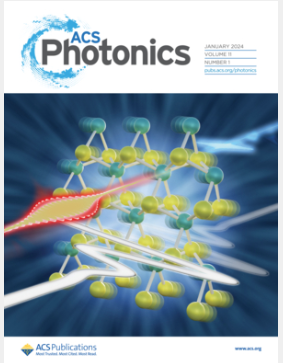卷帘式线扫描显微镜的研究进展
IF 6.5
1区 物理与天体物理
Q1 MATERIALS SCIENCE, MULTIDISCIPLINARY
引用次数: 0
摘要
三维荧光显微镜的最新进展显著提高了高分辨率研究生物过程的能力。然而,像晶格光片显微镜和斜平面显微镜这样的先进系统的复杂性和成本往往限制了它们在专业实验室的可及性。这篇评论探讨了一种新兴的显微镜技术,它利用线扫描照明与滚动快门检测相结合,提供了一种更简单,更容易获得的替代方案,仍然保持高成像性能。这些方法扩展了传统共聚焦显微镜的原理,沿着一条线照亮样品,并使用相机的滚动快门作为虚拟狭缝来增强光学切片和分辨率。讨论了各种实现,以突出其独特的优点和应用。此外,本评论还提供了实现之间的全面比较,并展示了通过巧妙使用滚动快门线扫描获得独特功能的最新系统。通过使高分辨率成像更容易获得,滚动快门线扫描显微镜容易使广泛的科学家能够探索复杂的细胞动力学和结构,为生命科学的新发现铺平道路。本文章由计算机程序翻译,如有差异,请以英文原文为准。

Advances in Rolling Shutter Line-Scan Microscopy
Recent advancements in 3D fluorescence microscopy have significantly enhanced the ability to study biological processes in vivo with high resolution. However, the complexity and cost associated with state-of-the-art systems like lattice lightsheet microscopy and oblique plane microscopy often limit their accessibility to specialized laboratories. This Review explores an emerging class of microscopy techniques that utilize line-scan illumination combined with rolling shutter detection, offering a simpler and more accessible alternative that still maintains high imaging performance. These methods extend the principles of traditional confocal microscopy by illuminating the sample along a line and using a camera’s rolling shutter as a virtual slit to enhance optical sectioning and resolution. Various implementations are discussed to highlight their unique benefits and applications. In addition, this Review provides a comprehensive comparison between implementations and showcases latest systems that gain unique capabilities enabled via clever use of rolling shutter line-scanning. By making high-resolution imaging more accessible, rolling shutter line-scan microscopy is prone to empower a wide range of scientists to explore intricate cellular dynamics and structures, paving the way for new discoveries in the life sciences.
求助全文
通过发布文献求助,成功后即可免费获取论文全文。
去求助
来源期刊

ACS Photonics
NANOSCIENCE & NANOTECHNOLOGY-MATERIALS SCIENCE, MULTIDISCIPLINARY
CiteScore
11.90
自引率
5.70%
发文量
438
审稿时长
2.3 months
期刊介绍:
Published as soon as accepted and summarized in monthly issues, ACS Photonics will publish Research Articles, Letters, Perspectives, and Reviews, to encompass the full scope of published research in this field.
 求助内容:
求助内容: 应助结果提醒方式:
应助结果提醒方式:


